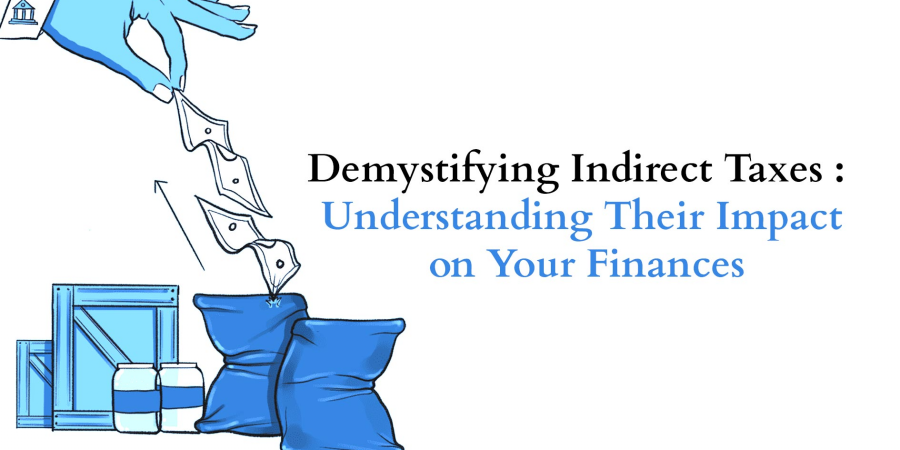

Taxes are a vital source of revenue for governments worldwide, used to fund public services and infrastructure. Indirect taxes are a significant component of the tax system, impacting consumers and businesses alike. Unlike direct taxes, which are levied directly on individuals or entities, indirect taxes are imposed on goods and services. In this article, we will delve into what indirect taxes are, how they work, and provide examples to illustrate their application.
Understanding Indirect Taxes :
Indirect taxes are taxes levied on the purchase or consumption of goods and services. They are typically imposed on producers or sellers but are ultimately passed on to consumers in the form of higher prices. Unlike direct taxes, which are based on income or profits, indirect taxes are based on consumption. Governments use indirect taxes as a means to raise revenue while also influencing consumer behaviour and promoting certain policy objectives.
Key Features of Indirect Taxes :
1. Paid Indirectly : Unlike direct taxes, which taxpayers pay directly to the government, indirect taxes are paid indirectly through the purchase of goods and services.
2. Embedded in Prices : Indirect taxes are incorporated into the prices of goods and services, meaning consumers ultimately bear the burden of the tax.
3. Regressive Nature : Indirect taxes tend to be regressive, meaning they have a greater impact on lower-income individuals who spend a larger proportion of their income on basic necessities.
4. Multiple Forms : Indirect taxes can take various forms, including value-added tax (VAT), excise duty, customs duty, and sales tax.
Examples of Indirect Taxes :
1. Value-Added Tax (VAT) :
VAT is a consumption tax levied on the value added at each stage of the production and distribution chain. It is one of the most common forms of indirect tax globally. For example, when a manufacturer sells a product to a wholesaler, VAT is charged on the sale price. The wholesaler, in turn, adds value to the product and sells it to a retailer, with VAT charged again. Finally, the retailer sells the product to the consumer, with VAT included in the final sale price.
2. Excise Duty :
Excise duty is a tax imposed on specific goods, such as alcohol, tobacco, gasoline, and luxury items. It is typically levied at the point of production or importation. For instance, excise duty is added to the price of cigarettes, which is reflected in the retail price paid by consumers.
3. Customs Duty :
Customs duty, also known as tariffs, is a tax imposed on goods imported into a country. It is designed to protect domestic industries and generate revenue for the government. For example, when a company imports electronic goods from another country, customs duty is levied based on the value or quantity of the imported goods.
4. Sales Tax :
Sales tax is a tax imposed on the sale of goods and services at the point of purchase. Unlike VAT, which is applied at each stage of production and distribution, sales tax is typically applied only once, usually at the retail level. For instance, when a consumer purchases a smartphone from a retail store, sales tax is added to the purchase price.
Conclusion :
Indirect taxes play a crucial role in generating government revenue and influencing consumer behaviour. By understanding the nature and examples of indirect taxes, individuals and businesses can better comprehend their impact on prices and make informed financial decisions. However, it's essential to recognize that indirect taxes can disproportionately affect lower-income individuals, highlighting the need for careful policy consideration and mitigation strategies to address potential inequities.
